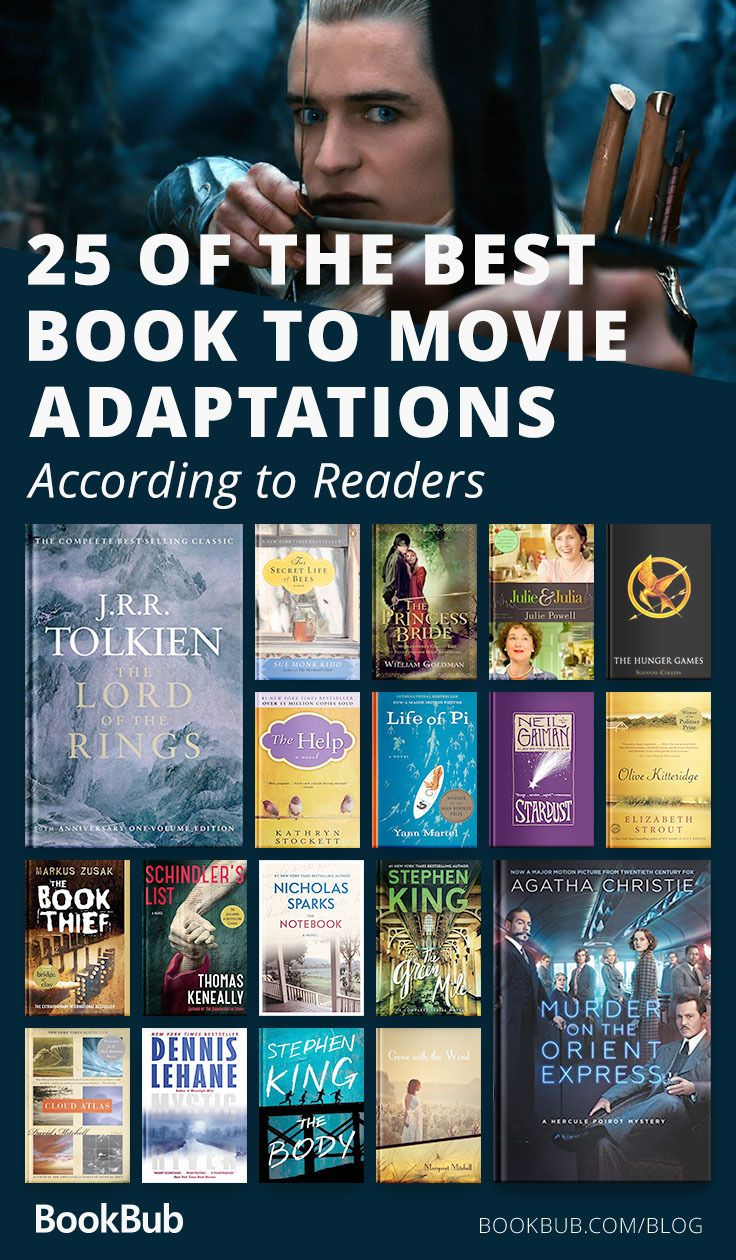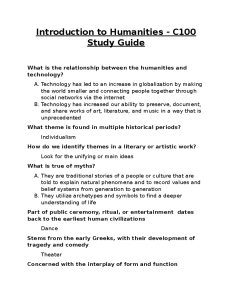Book-to-film adaptations have frequently sparked debates among audiences, with many asserting that “the book was better.” However, these cinematic translations can offer fresh perspectives and creative interpretations that potentially enhance the original narratives. As Oscar season approaches, several standout adaptations compete for attention, such as “Conclave,” “Nickel Boys,” and “A Complete Unknown,” all nominated for Best Picture. These films are just a few examples of how novels adapted into movies can resonate with viewers while showcasing the unique strengths of the storytelling medium. Exploring the realm of film adaptations of novels reveals a dynamic intersection between literature and cinema, often resulting in some of the best book adaptations we cherish today.
Transforming literature to film is a captivating process that intertwines narratives with visual artistry. Many filmgoers delight in witnessing their favorite prose come to life on the silver screen, igniting conversations about the differences and similarities between these two forms of storytelling. Daring choices in the adaptation process can result not only in entertaining movies based on books but also in thought-provoking critiques of the original material. Through a variety of techniques, filmmakers breathe new life into timeless tales, crafting captivating narratives that challenge preconceived notions. With audiences continually seeking the best book adaptations, the allure of revisiting beloved novels in a cinematic format undeniably remains strong.
The Best Book-to-Film Adaptations
In the world of cinema, book-to-film adaptations have garnered a reputation that divides audiences: some people herald them as remarkable masterpieces while others maintain that “the book was better.” However, certain films not only stay true to their literary roots but also enhance the narrative through visual storytelling. Movies like ‘The Shawshank Redemption,’ based on a novella by Stephen King, exemplify this narrative magic. The film transcended the page, marrying the poignant themes of hope and friendship with powerful performances and stunning cinematography.
Another standout adaptation is ‘The Godfather,’ which has become a cultural icon far beyond its origins as Mario Puzo’s crime novel. Director Francis Ford Coppola deftly navigated the complex relationships within the Corleone family, anchoring the film’s emotional depth in its carefully crafted screenplay. Such successful adaptations highlight the unique power of films to breathe new life into beloved stories, making them accessible to a broader audience who may not have encountered the original text.
Why Some Adaptations Succeed
The essence of what makes some book adaptations successful can often be attributed to their understanding of the source material. Filmmakers who respect the literary nuances while providing a fresh perspective can create a captivating viewing experience. For example, ‘L.A. Confidential’ brilliantly captures the moral complexities of James Ellroy’s novel, transforming its intricate plot into a cinematic spectacle that resonates with viewers. The film embraced the gritty realism of its narrative, which paid homage to the source while ensuring that the story was both engaging and cohesive on screen.
Moreover, the transformation of a book into a film often relies on strong directorial vision. Creativity in adaptation allows filmmakers to reinterpret plots and develop characters in ways that deepen the original narrative. A prime example is Mary Harron’s adaptation of ‘American Psycho,’ which took the bleakness of Bret Easton Ellis’ novel and found a unique expression of dark humor within its framework. These artistic liberties taken by filmmakers can either elevate the work beyond its textual origins or, conversely, can miss the mark entirely. The balance is crucial to ensuring that the adaptation stands on its own merits.
The Evolution of Literature to Film
The journey from literature to film has evolved significantly over the years. Initially, adaptations tended to be rather faithful to the source material, focusing on translating characters and stories directly to the screen. However, as audiences have become more discerning, filmmakers have started to explore alternative interpretations that resonate more deeply with contemporary culture. This shift has opened doors for more innovative and creative storytelling methods, as seen in the adaptation of Joyce Carol Oates’ ‘Where Are You Going, Where Have You Been?’ by Joyce Chopra. Rather than sticking directly to Oates’ narrative, Chopra expanded the storyline and deepened character arcs, providing a new lens through which viewers can engage with the content.
As filmmakers continue to reimagine literary works, they broaden the scope of how stories are perceived and understood. The intertextuality often brings fresh dialogues about the realities of the written word and the visual image. By bringing literature to life on screen, adaptations such as ‘Once Upon a Time in America’ show how music and imagery can complement and elevate a narrative, transforming the experience of storytelling into a multisensory journey.
Exploring the Best Film Adaptations of Novels
When analyzing the best film adaptations of novels, there is no shortage of exceptional examples that resonate deeply with both fans of the original stories and newcomers. Films such as ‘The Great Gatsby’ showcase the opulence and tragedy of its source material, with vibrant visuals that echo F. Scott Fitzgerald’s themes. These adaptations serve not only to entertain but also to provoke thought and discussion regarding the original storyline, its characters, and the broader implications found within the text.
The successful transition from page to screen often depends on the ability of the filmmakers to distill the heart of the narrative into a cinematic format. The emotional beats captured in adaptations can create lasting impressions on viewers, ultimately sparking a desire to explore the written work. Titles such as ‘Pride and Prejudice’ exemplify this phenomenon, encouraging audiences to dive back into the pages of Jane Austen’s timeless prose after experiencing its various adaptations.
Classic Literature Adapted for the Big Screen
Classic literature offers a treasure trove of stories ripe for cinematic adaptation. Works such as ‘Wuthering Heights’ and ‘Moby Dick’ have made their way to the silver screen several times, each interpretation bringing unique angles and emotional depth. The thematic richness found within classic novels, such as love, revenge, and existential dilemmas, allows filmmakers the freedom to explore complex narratives that can resonate with contemporary audiences.
Moreover, adaptations of classic literature often serve to promote the source material, introducing timeless stories to new generations. For instance, the many adaptations of ‘Jane Eyre’ highlight the novel’s enduring themes of identity and social class, allowing modern viewers to grapple with the same questions that captivated 19th-century readers. As filmmakers continue to reimagine these literary staples, the ongoing dialogue between literature and film enriches our cultural landscape.
The Role of Character Development in Adaptations
Character development stands as one of the most significant aspects when adapting literature to film. Crafting multidimensional characters is essential to capturing the audience’s attention and evoking emotion. In adaptations like ‘The Fault in Our Stars,’ filmmakers took the nuanced portrayal of Hazel Grace and Augustus Waters from John Green’s novel and translated their complicated love story into a riveting cinematic experience. The emotional trajectory of these characters is a core reason why these adaptations connect with viewers.
However, this aspect can also be a double-edged sword. In some adaptations, characters may become simplified or altered in ways that stray from their original arcs. For instance, disappointing adaptations often result from misinterpretation of characters’ motivations, which can leave audiences feeling detached or disillusioned. The balance of staying true to the complexities of character while embracing cinematic storytelling is vital to crafting successful film adaptations.
Visual Storytelling: Bringing Books to Life
The essence of film lies in its ability to convey stories through visual storytelling; a powerful tool that often transcends the written word. Adaptations like ‘The Lord of the Rings’ encapsulate the vibrancy of literary landscapes, showcasing immersive worlds that are hard to convey solely through text. Peter Jackson’s masterful direction transformed J.R.R. Tolkien’s epic saga into an extraordinary visual spectacle, engaging audiences in ways that only cinema can achieve.
These cinematic representations allow filmmakers to elevate scenes by incorporating elements such as music, lighting, and cinematography, creating an emotional ambiance that complements the source material. This synergy between visuals and storytelling not only captivates viewers but can also enhance their understanding of the narrative. Ultimately, a film adaptation that excels in visual storytelling can offer audiences a unique experience, encouraging them to revisit the original text with new appreciation.
Challenging the Perception of ‘The Book Was Better’
The adage that “the book was better” often pervades discussions about adaptations, but it’s crucial to challenge this perception. While books provide depth and context, films offer a different medium to explore those narratives. Adaptations can illuminate aspects of a story that might not be as easily conveyed through prose. For instance, Todd Haynes’ adaptation of ‘Carol’ transformed Patricia Highsmith’s novel into a lush visual feast that captured the subtleties of emotion and societal pressures faced by its characters in a way that readers can only imagine.
Moreover, it’s worth acknowledging that adaptations function best as standalone works of art rather than direct translations of text. Celebrating the distinct qualities of both mediums enriches the storytelling experience and encourages a deeper engagement with the narratives on offer. Instead of relegating adaptations to the shadow of their literary predecessors, embracing their artistic interpretations can lead to a newfound appreciation for the storytelling potential inherent in both film and literature.
The Impact of Audience Expectations on Adaptations
Audience expectations play a crucial role in how successful adaptations are received. Fans of the original literary works often bring their preconceived notions and emotional connections to the viewing experience, which can shape their perception of the film. When adaptations diverge from beloved aspects of a book, they risk alienating dedicated readers. A prime example is the backlash faced by adaptations like ‘The Golden Compass,’ where deviations from Philip Pullman’s ‘His Dark Materials’ trilogy left fans dissatisfied.
Conversely, adaptations that stay true to their literary roots while introducing fresh elements can enrich audience satisfaction. This delicate balance involves not only honoring the essence of the original work but also catering to the evolving tastes of modern viewers. As filmmakers navigate these challenges, they constantly seek to engage both longtime fans and newcomers, creating adaptations that spark conversations about storytelling across mediums.
Frequently Asked Questions
What are the best book adaptations to watch?
Some of the best book adaptations emphasized by film critics include classics like ‘Misery’ by Stephen King and ‘L.A. Confidential’ by James Ellroy. These films capture the essence of the novels and often offer compelling performances that bring the literary characters to life.
Why do some films based on books outperform their source material?
Films based on books often outperform their source materials due to adept adaptations that transform the narrative, deepen character arcs, or enhance emotional connections. For instance, ‘American Psycho’ benefited from its off-kilter adaptation by Mary Harron, which infused humor and liveliness into Bret Easton Ellis’ originally bleak novel.
How does adapting literature to film change the story?
Adapting literature to film frequently alters the story to suit cinematic storytelling. Elements like pacing, character development, and themes may be emphasized or condensed. For example, adaptations like ‘Once Upon a Time in America’ demonstrate how visual and musical storytelling can elevate the original narrative beyond its written form.
What makes a successful film adaptation of a novel?
A successful film adaptation of a novel typically maintains the core themes and emotional depth of the source material while creatively interpreting it for the screen. ‘L.A. Confidential’ is a prime example, as it effectively captures the complex characters and moral ambiguities present in James Ellroy’s novel while making necessary adjustments to fit the film medium.
Are there any notable recent films based on books?
Yes, recent films based on books, such as ‘Conclave’ and ‘Nickel Boys,’ have garnered attention, especially during award seasons. These adaptations often reflect current social issues and resonate with audiences, showcasing the ongoing relevance of literature in film.
How do filmmakers choose which novels to adapt?
Filmmakers often choose novels for adaptation based on their storytelling potential, existing fan base, and cultural relevance. Complex characters, rich narratives, and themes that resonate with modern audiences are key factors that drive the selection process for film adaptations.
What challenges do filmmakers face in adapting novels into movies?
Filmmakers often face challenges in condensing intricate plots and character developments into a limited runtime while retaining the original’s essence. Balancing fidelity to the source material with creative interpretation is crucial in crafting effective film adaptations.
What are some examples of movies that improved upon their book counterparts?
Movies that are often cited as improvements over their book counterparts include adaptations like ‘American Psycho’ and ‘Smooth Talk,’ where filmmakers successfully reimagined the original narratives, enhancing thematic depth and character exploration beyond what was offered in the novels.
Why do some readers claim ‘the book was better’ after seeing an adaptation?
Readers often claim ‘the book was better’ because novels can explore nuanced psychological themes and intricate details that films may overlook due to time constraints. This sentiment highlights the challenge of fully capturing the depth of literature in a film format.
How can I find movies based on books that I might enjoy?
To find movies based on books that match your interests, consider visiting dedicated film databases, literary websites, or following film festivals that showcase adaptations. Searching online for lists of ‘best book adaptations’ can also help you discover titles that resonate with your preferences.
| Title | Author | Recommended By | Key Points | Notes on Adaptation |
|---|---|---|---|---|
| Misery | Stephen King | Angela Allan | Explores themes of writing, fame, and success. | The 1990 film is faithful but lacks depth from the novel. |
| L.A. Confidential | James Ellroy | Angela Allan | Gritty crime fiction reflecting 1950s LA. | The film captures the essence while streamlining the plot. |
| Jack Reacher Series | Lee Child | Derek Miller | Features an ex-military protagonist with recurring themes. | Two films starring Tom Cruise diverge from character size expectations. |
| The Hoods | Harry Grey | Martin Puchner | Semi-autobiographical about Jewish gang life. | Adaptation by Leone and Morricone offers operatic grandeur. |
| American Psycho | Bret Easton Ellis | David Levine | A critique of hedonism and materialism. | The adaptation adds humor and liveliness, contrary to the novel. |
| Where Are You Going, Where Have You Been? | Joyce Carol Oates | Brittany Gravely | Explores teenage angst and danger. | Chopra’s adaptation adds depth and alters the ending. |
Summary
Book-to-film adaptations often spark lively debates among audiences, leading to the classic retort that “the book was better.” Yet, there are numerous instances where the adaptations offer fresh perspectives or enhance the original narratives. Films like Stephen King’s “Misery” and James Ellroy’s “L.A. Confidential” illustrate how adaptations can be both faithful to their source materials and creatively transformative. The success of adaptations not only highlights the allure of stories across mediums but also underscores the potential for films to offer deeper insights or new emotional arcs. In this landscape, it becomes clear that some film adaptations merit just as much acclaim as the literature they are based upon.




